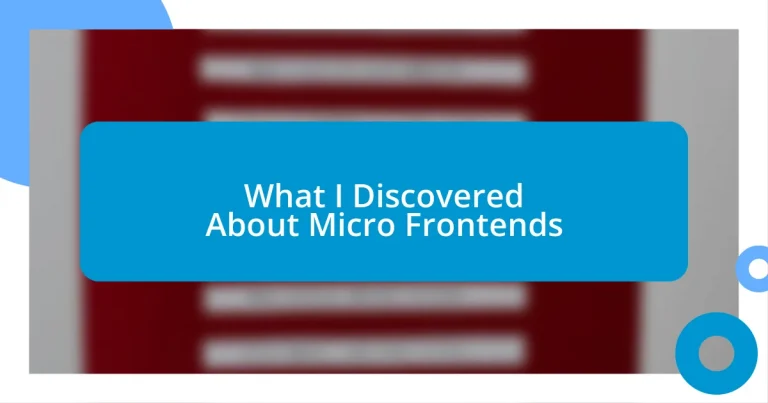Key takeaways:
- Micro frontends enhance scalability, faster deployments, and team autonomy, allowing independent management of application parts.
- Key principles include team independence and technology diversity, fostering innovation and focused development while encouraging collaboration.
- Challenges such as managing shared dependencies, maintaining consistent user experience, and optimizing performance need careful consideration during implementation.
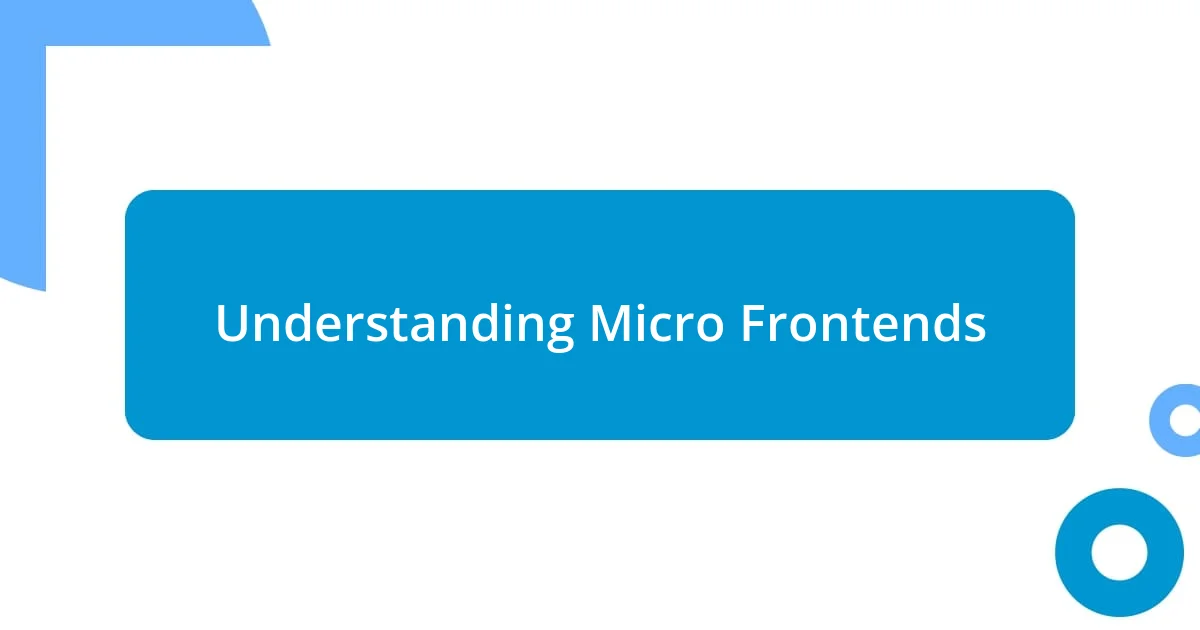
Understanding Micro Frontends
Micro frontends represent an architectural approach that breaks down a web application into smaller, self-contained parts. Each team can manage these frontends independently, which is liberating. I remember diving into a project where we adopted this methodology, and the sense of ownership and creativity it fostered among the teams was invigorating. It made me wonder, have you ever felt that sense of autonomy in your work?
When I first encountered micro frontends, I was struck by how this strategy mirrors microservices in backend development. It’s all about focusing on building small, manageable pieces that come together to form a larger application. I found it fascinating how this approach not only improved our deployment speed but also enhanced collaboration among teams. Could this be the secret sauce for agile development?
Adopting micro frontends allows teams to employ different technologies and frameworks for each part of the application, which can be both exhilarating and overwhelming. I’ve seen teams hesitate due to the complexity this might introduce. However, I believe this flexibility is a major advantage, leading to innovation and better user experiences. Don’t you think having the freedom to choose your tools can amplify creativity?
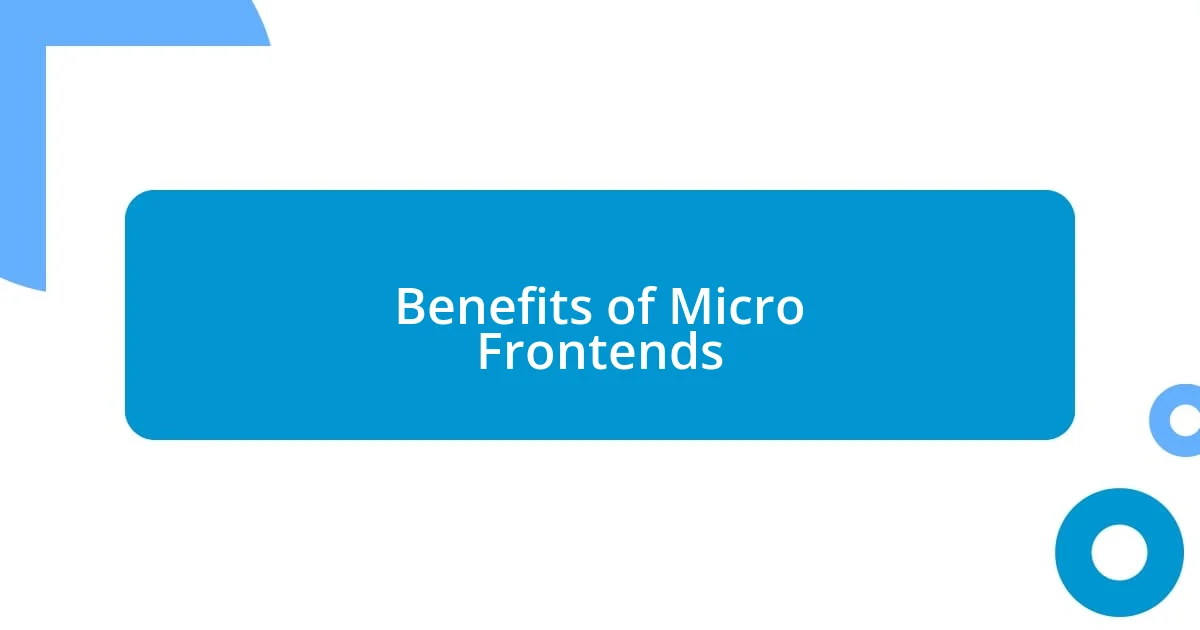
Benefits of Micro Frontends
I’ve found that one of the most significant benefits of micro frontends is the potential for improved scalability. When you break a large application into smaller chunks, each team can scale their part independently. This reminded me of a project where we faced increased traffic; our ability to optimize each micro frontend without overhauling the entire app truly saved us both time and resources. Have you ever experienced that rush when your team quickly adapts to a growing demand?
Another advantage that I cherish about micro frontends is the speed of deployment. With teams working on separate features, we could push updates faster and with fewer hiccups. I remember a sprint where we rolled out a major update—it felt exhilarating to see how swiftly feedback could be incorporated, and it was rewarding to deliver new features to users promptly. Doesn’t it feel fantastic to minimize downtime and keep your audience engaged?
Lastly, I believe micro frontends can enhance team autonomy and innovation. Each team has the freedom to explore new technologies that fit their specific needs. In a past project, one team introduced a cutting-edge framework that revolutionized our UI without disrupting other parts of the application. That kind of innovation is infectious! How empowering does it feel to foster that level of creativity among teams?
| Benefit | Description |
|---|---|
| Scalability | Teams can scale their parts independently, optimizing performance as needed. |
| Faster Deployments | Independent teams allow for quicker updates and feature rollouts, resulting in minimal downtime. |
| Team Autonomy | Teams can choose their technologies, fostering innovation and adaptability. |
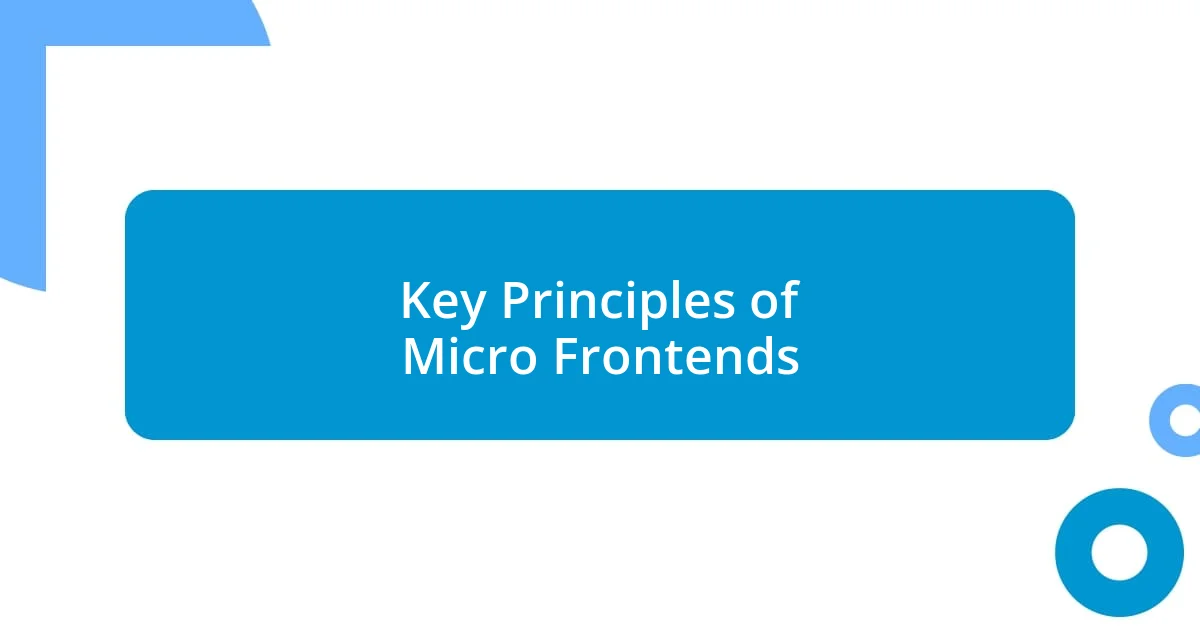
Key Principles of Micro Frontends
One key principle of micro frontends is the independence of teams. Working in this model, I felt a remarkable sense of collaboration coupled with personal accountability. There were instances when our collaboration led to imaginative solutions, like when one team crafted a stunning user interface while another focused on vital backend functionalities. It’s exciting to see how different perspectives can harmonize to enhance the overall user experience.
Another principle that stands out is the emphasis on technology diversity. This flexibility can be thrilling and intimidating at the same time. I recall a time when we had a heated but enlightening discussion about which framework to adopt for a specific feature. It was like a creative brainstorming session fueled by our diverse technological expertise. I’ve come to appreciate how embracing different tools can lead to unexpected innovations and better outcomes.
- Team Independence: Each team can work autonomously, fostering creativity and ownership over their parts.
- Technology Diversity: Teams can utilize different frameworks, allowing for tailored solutions that meet specific needs.
- Focused Development: Breaking the project into smaller segments enables targeted improvements without affecting the entire application.
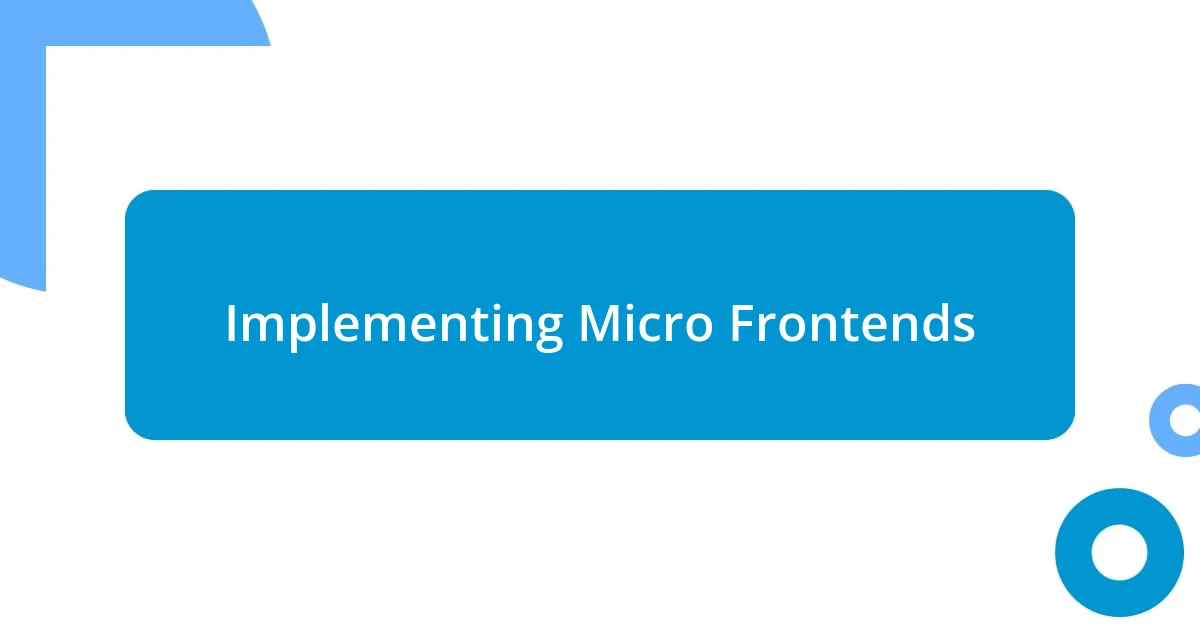
Implementing Micro Frontends
When it comes to implementing micro frontends, choosing the right architecture is crucial. In one project, we decided on the module federation approach, which allows us to load different micro frontends dynamically. This flexibility reminded me of a puzzle—each team contributes a piece, and when correctly assembled, we create a seamless user experience. Have you ever felt that gratification when everything clicks into place?
Communication between teams plays a vital role in successful micro frontend implementation. I vividly recall our weekly sync-ups where we discussed our progress and shared insights. Those meetings not only kept everyone informed but also fostered a sense of community. I often left those discussions feeling energized and motivated, like we were all on the same mission. Isn’t it amazing how collaboration can spark creativity and drive?
Lastly, monitoring and performance optimization shouldn’t be overlooked. During one launch, we learned the importance of tracking each micro frontend separately. It became evident that some parts needed tweaking as user interaction data rolled in. The real-time feedback we gathered was exhilarating—it was like having a live pulse on our users’ experience. How empowering is it to see your work in action and adjust it to enhance user satisfaction?
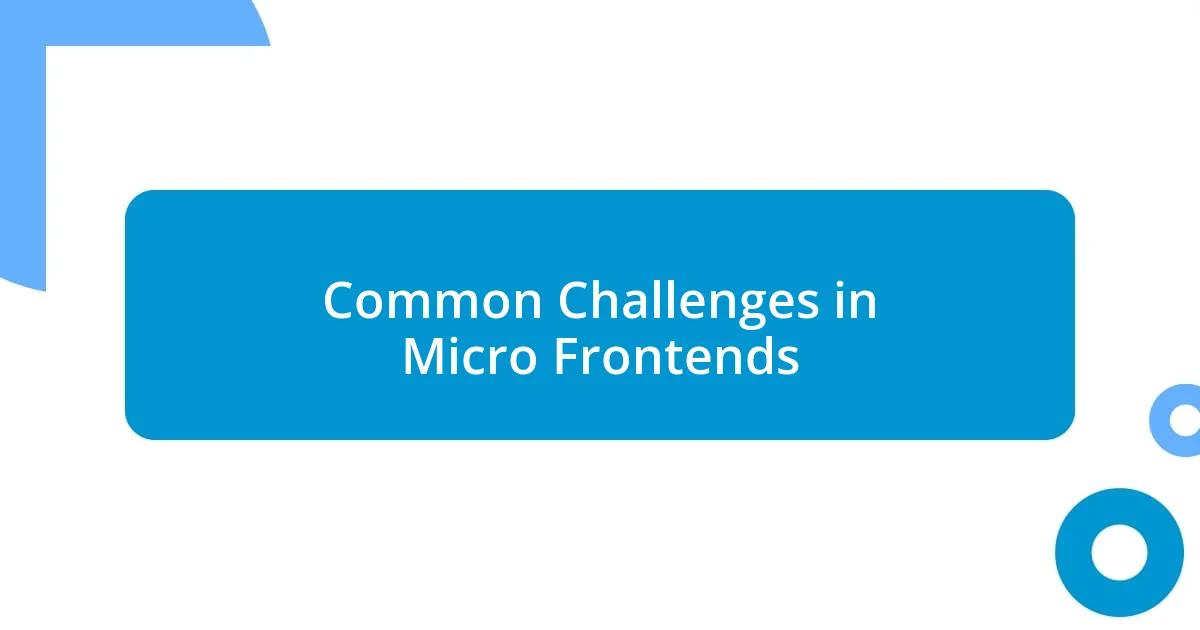
Common Challenges in Micro Frontends
Navigating the world of micro frontends isn’t without its pitfalls. One challenge I frequently encountered was managing shared dependencies. There were instances where overlapping versions of libraries caused unexpected conflicts. I remember the frustration of a last-minute bug that totaled hours of debugging because two teams unknowingly relied on different versions of a popular UI library. Have you ever faced a situation where what seemed like a small detail turned into a major roadblock?
Another hurdle is the integration of user experience across different micro frontends. I distinctly recall a project where the overall look and feel was inconsistent—every team had its unique flair, which, while creative, led to a disjointed user journey. It’s fascinating how something as simple as button styles or font choices can disrupt the user experience. Have you noticed inconsistencies in your own projects that could be addressed through better guidelines?
Lastly, I’ve seen performance optimization become a tricky balancing act in a micro frontend architecture. During one of our product launches, we experienced noticeable delays due to heavy micro frontend loading times. It was a wake-up call that forced us to reevaluate how we approached performance metrics. Asking ourselves tough questions about load times and responsiveness pushed us to adopt more effective strategies. The thrill of turning those challenges into learning moments is what keeps me engaged in this journey.
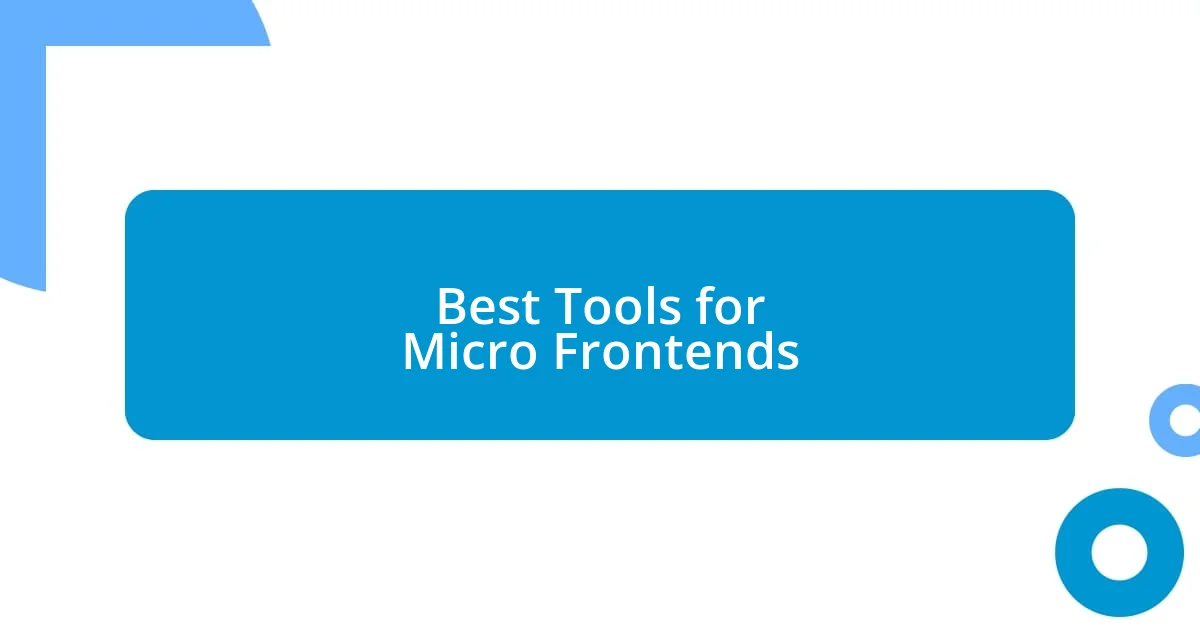
Best Tools for Micro Frontends
When exploring tools for micro frontends, one framework that stands out is Single SPA. I remember the first time I implemented it in a project; it felt like finding the missing piece to a puzzle I didn’t know was there. With its ability to orchestrate multiple frameworks, it allowed our different teams to work independently while still producing a cohesive application. Isn’t it delightful when a tool perfectly matches your workflow?
Another fantastic tool is Module Federation, particularly with Webpack 5. During my last work cycle, we leveraged it to share modules seamlessly across various applications. This capability not only improved development speed but also reduced duplicated efforts. I often think back to that phase and how it transformed our deployment process—doesn’t it feel great when innovation simplifies our lives?
Let’s not overlook tools like Tailwind CSS for styling. I’ve found that the utility-first approach not only enhances design consistency across micro frontends but also empowers developers to think creatively without being restricted to a rigid stylesheet. It was exhilarating to see teams picking up Tailwind and easily collaborating on components that felt unified yet uniquely designed. Have you experienced the joy of a tool that elevates both aesthetics and productivity?












